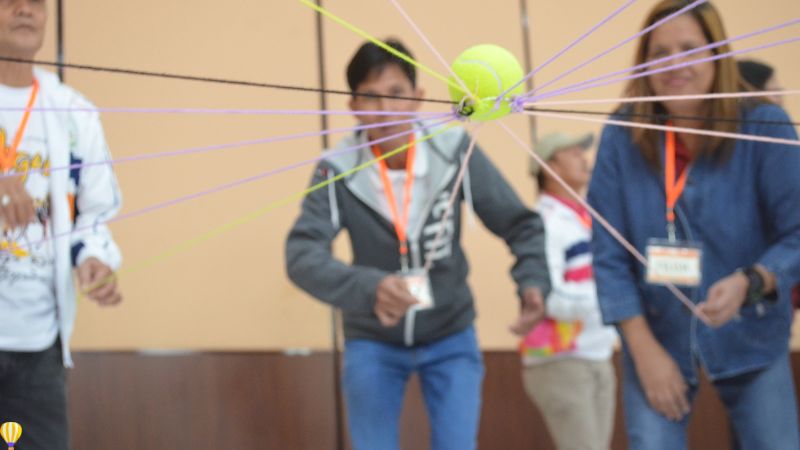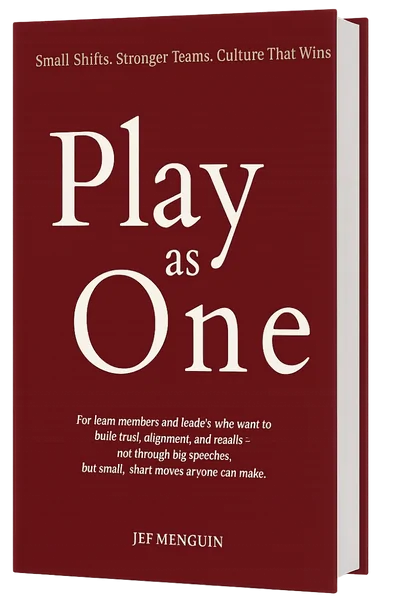There’s something magical about games you grew up playing. They take you back to a time when life was simpler and teamwork was effortless. But these childhood games can be more than nostalgia — they can supercharge your next team-building event.
10 Pinoy Traditional Games
Traditional Filipino games are packed with lessons on leadership, strategy, collaboration, and trust. So why not bring a bit of that laro (play) into your workplace? Here’s how.
1. Patintero: The Art of Team Strategy
Imagine a grid drawn on the ground. One team guards the lines, the other tries to cross without getting tagged. It’s all about quick thinking, anticipating moves, and working together.
How it’s played:
- Draw a grid with four horizontal and two vertical lines.
- One team guards the lines, while the other attempts to cross.
- If you get tagged, you’re out. If you cross, you score.
How to adjust for adults:
- Add strategy by letting teams plan their approach.
- Create roles: strategists, scouts, and runners.
- Set a time limit to make the game more intense.
Why it works: It mirrors workplace strategy — reading the situation, anticipating challenges, and moving swiftly as a unit.
2. Tumbang Preso: Tactical Risk-Taking
You’ve got a can, a slipper, and a guard. The goal? Knock over the can without getting tagged. It’s a game of precision and risk, a delicate dance between offense and defense.
How it’s played:
- Place a can in the middle.
- One player guards the can.
- Other players take turns throwing a slipper to knock it over while avoiding getting tagged.
How to adjust for adults:
- Use heavier objects to increase difficulty.
- Turn it into a team relay with more players defending and attacking.
- Create team strategies on when to attack and how to distract the guard.
Why it works: It’s a mix of precision and strategic risk, perfect for a team that needs to balance offense with defense in the workplace.
3. Luksong Baka: Raising the Bar
Here’s how it goes: One player crouches down, and the others take turns jumping over. After each round, the player gets higher, making the jump tougher. This game is all about overcoming challenges.
How it’s played:
- One player crouches while others jump over them.
- With each round, the crouched player stands taller.
- Touch the “baka,” and you’re out.
How to adjust for adults:
- Use mats or padded barriers to jump over safely.
- Make it a team relay, where teammates jump while holding hands or linked by a rope.
- After each jump, discuss how this relates to overcoming work challenges.
Why it works: It’s the perfect metaphor for workplace growth. As the bar gets higher, the team has to find ways to clear it together.
4. Piko (Hopscotch): Precision in Motion
Piko is a classic. You throw a stone, hop through numbered squares, and retrieve your marker without stepping on the lines. It’s all about precision and focus — key traits in any team.
How it’s played:
- Draw a grid with numbered squares.
- Players throw a marker into a square, then hop through the grid, skipping the square with the marker.
- Players must retrieve the marker without stepping on the lines.
How to adjust for adults:
- Assign work-related tasks to each square. Every time a player lands, they solve a problem or complete a challenge.
- Turn it into a relay, where teams must finish the grid as fast as possible while answering questions.
- Add physical endurance elements like balancing objects while hopping.
Why it works: It sharpens precision and timing — perfect for teams that need to work under pressure while staying focused.
5. Luksong Tinik: Trust in High Stakes
This game is a bit like Luksong Baka, but with a twist. Two players create a “thorn” with their feet and hands, and the others must jump over. Each round, the thorns get higher.
How it’s played:
- Two players sit with their feet together, forming a “thorn.”
- Other players jump over the “thorns,” which get higher after each round.
- Fail to clear it, and you’re out.
How to adjust for adults:
- Use elastic bands or ropes instead of body parts to raise the bar.
- Make it a team relay where each member jumps over the barrier while holding something delicate (like an egg!).
- Discuss the concept of trust and supporting each other through challenges.
Why it works: It’s about raising the stakes and pushing the limits — just like tackling bigger projects at work. The higher the jump, the more the team needs to trust each other.
6. Sipa: Focus and Coordination
Sipa is about keeping a small object airborne using your feet. It’s simple, but it requires intense focus, coordination, and teamwork to keep it going.
How it’s played:
- Players kick a weighted shuttlecock (the sipa) into the air using their feet.
- The goal is to keep it airborne as long as possible without using hands.
How to adjust for adults:
- Form teams and make it a challenge to keep the sipa up the longest.
- Introduce multiple sipa for increased difficulty.
- Add a scoring system for each successful kick to encourage friendly competition.
Why it works: It’s all about keeping things in motion — much like a project in the office. Focus, coordination, and a bit of fun keep things moving.
7. Agawan Base: Tactical Teamwork
This is capture the flag, Pinoy style. Two teams, two bases, and one goal — capture the other team’s base while defending your own. It’s pure strategy in action.
How it’s played:
- Each team has a base at opposite ends.
- The goal is to capture the opposing team’s base without getting tagged.
- Players who are tagged are sent to a holding area, but teammates can rescue them by sneaking past the opposing team.
How to adjust for adults:
- Add complexity by introducing roles like defenders, attackers, and scouts.
- Use a larger area or even different parts of the office for a bigger playing field.
- Name the bases after company departments or project goals, using the game to symbolize reaching company milestones.
Why it works: It’s about tactical teamwork — defense, offense, and strategy all in one go. Perfect for any team that needs to think and move as a unit.
8. Chinese Garter: Coordination Under Pressure
Two people hold a garter while others jump over it. The garter gets raised higher with every jump, testing flexibility and coordination. It’s deceptively simple but requires intense focus.
How it’s played:
- Two players hold the ends of a garter, starting at ankle height.
- Other players take turns jumping over it.
- The garter is raised higher after each successful round.
How to adjust for adults:
- Raise the garter to more challenging heights to push physical limits.
- Add a teamwork component where pairs must jump over while holding hands.
- Create a competitive relay to encourage friendly competition.
Why it works: It’s about coordination under pressure, just like juggling multiple tasks in the workplace. Everyone has to stay in sync to succeed.
9. Pityaw: Precision and Tactics
This game is all about hitting a smaller stick (the pityaw) with a larger one and sending it flying. Think of it as Pinoy baseball — without the bat and ball.
How it’s played:
- Use a stick to hit a smaller stick (the pityaw) into the air.
- The goal is to send it flying as far as possible, while the opposing team tries to catch it.
How to adjust for adults:
- Use foam bats and balls for safety.
- Introduce team strategies where hitters work together to maximize distance.
- Make catching and stopping the pityaw a team effort to encourage collaboration.
Why it works: It’s about precision and teamwork — hitting targets and working together, just like achieving business goals.
10. Palo Sebo: Climbing Challenges Together
This one’s the ultimate challenge: Climbing a greased pole to reach a prize at the top. It’s tough, slippery, and requires sheer determination — just like tackling those big work goals.
How it’s played:
- A greased bamboo pole is set up with a prize at the top.
- Players attempt to climb the pole and reach the prize.
- The first to grab it wins.
How to adjust for adults:
- Add safety measures like harnesses and mats to prevent injury.
- Make it a team effort, where one climber gets help from the rest of the group.
- After each climb attempt, discuss strategies for tackling difficult work projects.
Why it works: Climbing a slippery pole is just like facing big, tough challenges at work. It’s not easy, but with the right support and perseverance, you’ll get there.
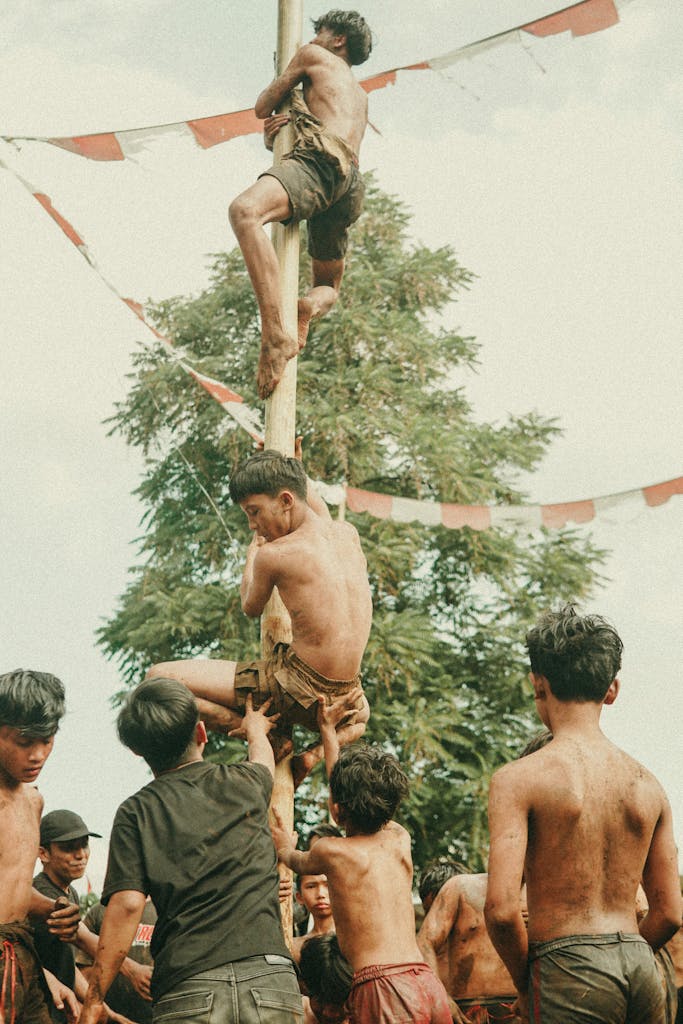
These traditional Filipino games are more than just play. They’re packed with lessons that apply directly to the workplace — strategy, trust, coordination, and overcoming challenges. The beauty is that they’re fun, engaging, and full of energy.
Injecting these games into your next team-building event is a surefire way to boost camaraderie, energize your team, and remind everyone that, sometimes, work should be laro.
Why Traditional Pinoy Games Will Transform Your Team Building
When you think of team-building activities, what comes to mind? Trust falls? Escape rooms? Maybe another round of Zoom icebreakers? Sure, they have their place. But if you want to supercharge your team, ignite creativity, and bring out the best in your people, let me tell you about an untapped goldmine: traditional Pinoy games.
That’s right. The same games you played barefoot in the streets as a kid hold the keys to unlocking team synergy, fast decision-making, and a ton of fun.
Here’s why.
1. They Break Barriers Instantly
When was the last time your team laughed together? Not the polite, forced kind. I mean the type of laughter that breaks down walls, the kind that makes you forget titles, hierarchy, and who reports to whom.
That’s what happens when you play games like Patintero or Agawan Base. The moment someone leaps across a line to avoid getting tagged or sneaks past to capture the base, everyone forgets their roles. For a few moments, the whole team is just a group of people, working together, laughing together, and, most importantly, connecting.
You can’t get that kind of bond from another PowerPoint presentation.
2. They Encourage Real Teamwork
Teamwork. It’s that magic word every boss throws around, but how often do you actually see it in action?
Enter Luksong Tinik and Tumbang Preso. These games demand strategy, quick thinking, and, most importantly, collaboration. One person can’t win a round of Tumbang Preso on their own. They need their team to outmaneuver the guard, coordinate attacks, and rescue teammates.
It’s the same in Luksong Tinik. The higher the “thorn,” the more trust and support you need to clear the jump. You’ve got your feet on the ground, your teammates in the air, and everyone depending on each other. It’s teamwork at its rawest. And the best part? That teamwork translates effortlessly back into the office.
3. They Teach Problem-Solving Under Pressure
Here’s a secret: the way you solve a problem in a game often mirrors how you tackle problems at work.
Take Chinese Garter. Every jump gets harder, the stakes get higher, and there’s a ticking clock. Sound familiar? It’s just like handling high-pressure projects in the workplace. The challenge pushes your team to think on their feet, find creative solutions, and act fast.
And in Piko, it’s all about focus and precision. One wrong step, and you’re out. There’s no second guessing — just like when you’re managing tight deadlines or client expectations. Your team’s performance in the game tells you a lot about how they’ll handle real-world stress.
4. They Build Resilience and Grit
If you’ve ever tried climbing a Palo Sebo pole, you know it’s no joke. The pole is slippery, the climb is tough, and every inch feels like a mile. But when someone reaches the top, the entire team feels like they’ve conquered a mountain.
That’s the essence of resilience.
Your team isn’t just playing games; they’re practicing grit, perseverance, and pushing past their limits. It’s easy to get discouraged when the pole is slippery, or the garter is high. But guess what? Teams that learn to keep going, no matter how hard the climb, come out stronger.
5. They Unleash Creative Energy
The best ideas are born when people feel free. Free to make mistakes. Free to experiment. Free to play.
Games like Sipa and Pityaw tap into that creative energy. There’s no manual, no rigid rules. You kick, you improvise, you find new ways to win. It’s all about experimenting with your environment and using what you’ve got.
This kind of play sparks innovation. You’ll see your quietest team member come alive with an unexpected idea. Your team will start bouncing off each other’s energy, finding new solutions, and challenging the status quo. All because they’ve been given the freedom to think and play outside the box.
6. They Strengthen Leadership Skills
You can spot a leader when the game gets tough. Someone who steps up, directs the group, and motivates the team to push harder. Traditional games like Agawan Base and Patintero are perfect for nurturing these skills.
In Agawan Base, it’s all about strategy. Who will guard the base? Who will attack? Leaders emerge as they guide the team’s efforts. The same skills translate into the workplace — the ability to see the big picture, coordinate efforts, and make fast decisions when it matters most.
Your team doesn’t need a formal title to lead. These games let natural leaders rise to the occasion.
7. They Bring Back the Fun (and Stress Relief)
Let’s face it — work can be stressful. Deadlines, meetings, back-to-back calls. It’s easy to forget how to have fun.
Traditional Pinoy games remind you. They remind your team of the joy of play, the thrill of competition, and the satisfaction of working together to win. And when the fun returns, so does motivation.
Taking a break from the grind doesn’t just make your team feel good — it recharges them. It gives them the energy to tackle their work with fresh eyes, sharper focus, and a lighter heart.
The Pinoy Edge
Here’s the kicker: Traditional Pinoy games aren’t just games. They’re a masterclass in human connection, strategy, and perseverance, disguised as fun.
These games offer something different in a world where team-building exercises have become routine. They bring the essence of Filipino culture — creativity, resourcefulness, and camaraderie — right into your workplace.
And if you’re still wondering how traditional Pinoy games can add value to your next event, just imagine this: A team that laughs together, strategizes together, climbs slippery poles together, and — most importantly — succeeds together.
So, next time you’re planning a team-building day, ditch the trust falls. Go back to the classics. Go back to the games that made us who we are. The truth is that playing together builds teams like nothing else.
Ready to supercharge your team?
Let’s play.

Unmasking the Team Player Myth in Philippine Workplace Culture
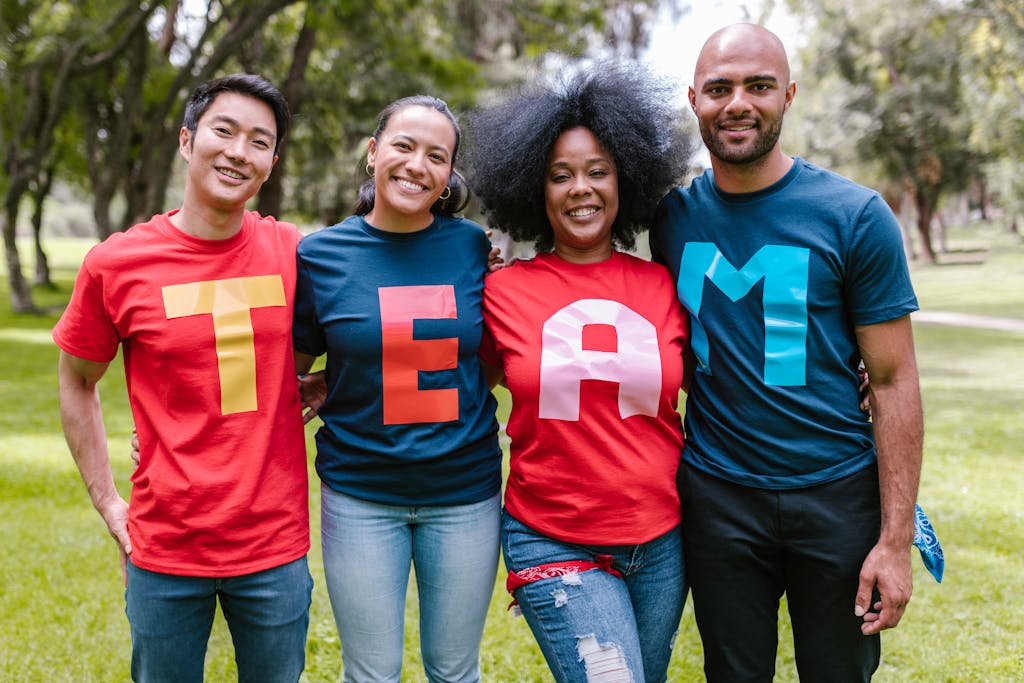
25 Team Building Activities for Filipino Teams: A Complete Toolkit for Leaders

The Ultimate Guide to Team Building Activities (2025 Edition)
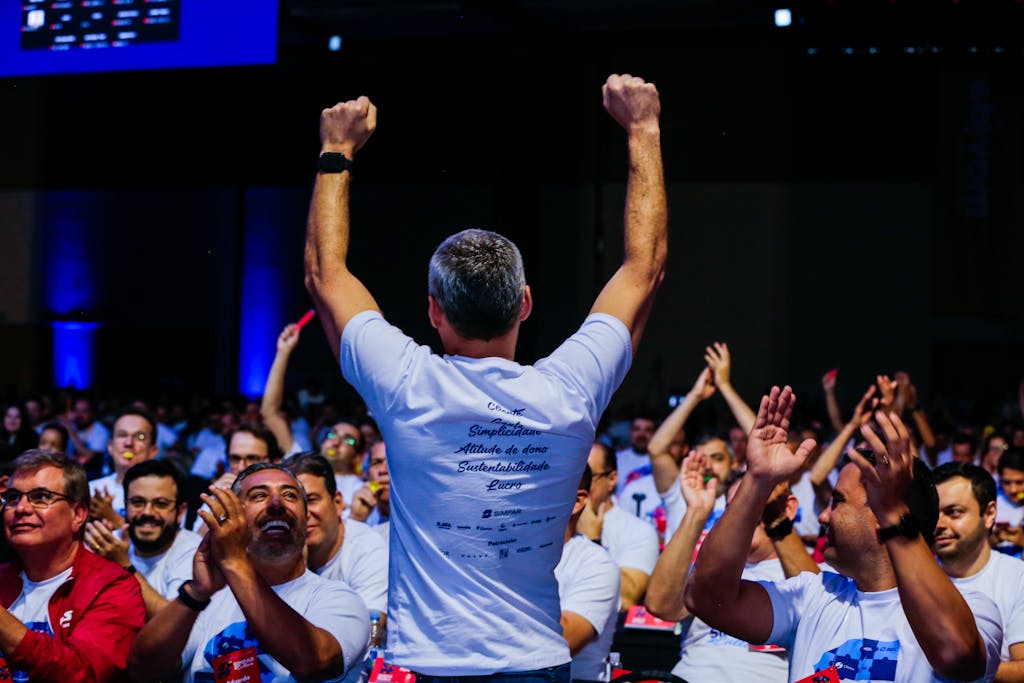
32 Filipino Motivational Speakers Who Inspire Action



